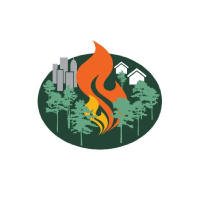Join North Atlantic Fire Science Exchange's webinar on fire prediction methods. Learn more on WebinarCafe
Fire Safety Webinar Benefits
Webinar: Monitoring and predicting conditions that contribute to fire spread are central to both the national fire danger rating system and prescribed fire efforts. In forests, fine scale variation in stand structure and composition can influence microclimate conditions (i.e. understory temperature and relative humidity) and dead fuel moisture. However, these dynamic drivers of fire behavior are difficult to parameterize in predictive models due to their high spatial and temporal variability. In this study, we used terrestrial laser scanning, field-based climate data loggers, fuel moisture sticks, and forest inventory measurements to better understand the relationship between forest structure, microclimate, and dead fuel moisture in two managed northern conifer forests in Maine and New Hampshire. This research enhances northeastern fire managers’ ability to plan and implement fuel treatments by highlighting how changes in forest stand structure drive fine scale heterogeneity in fuel moisture and fire behavior.

